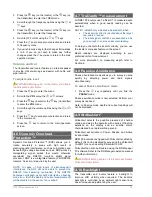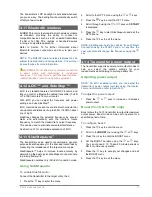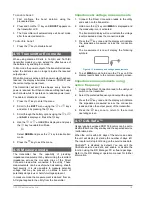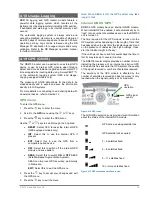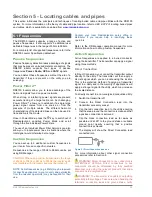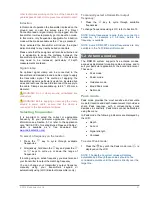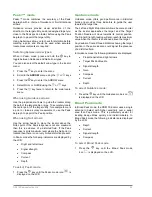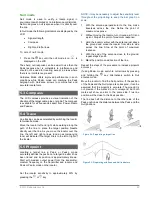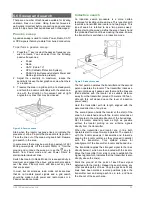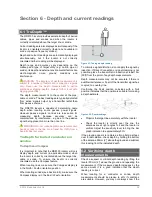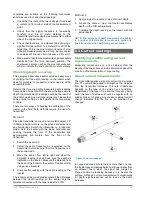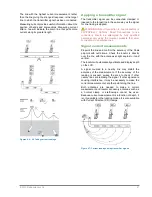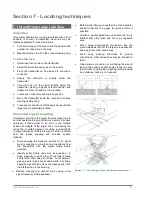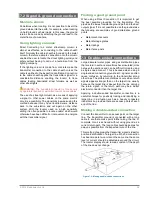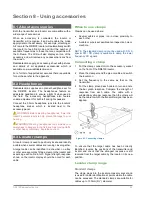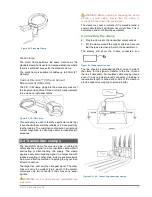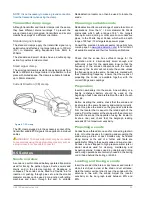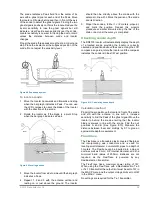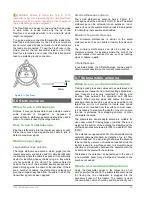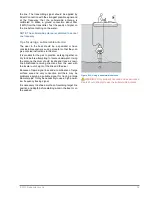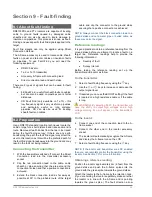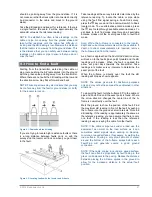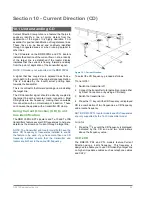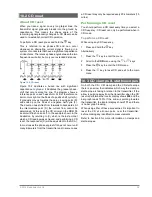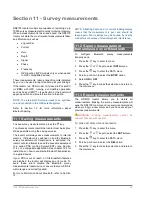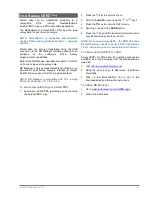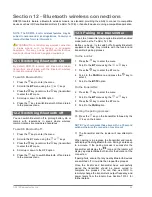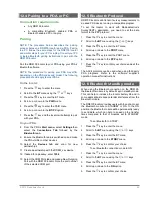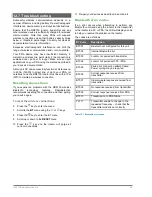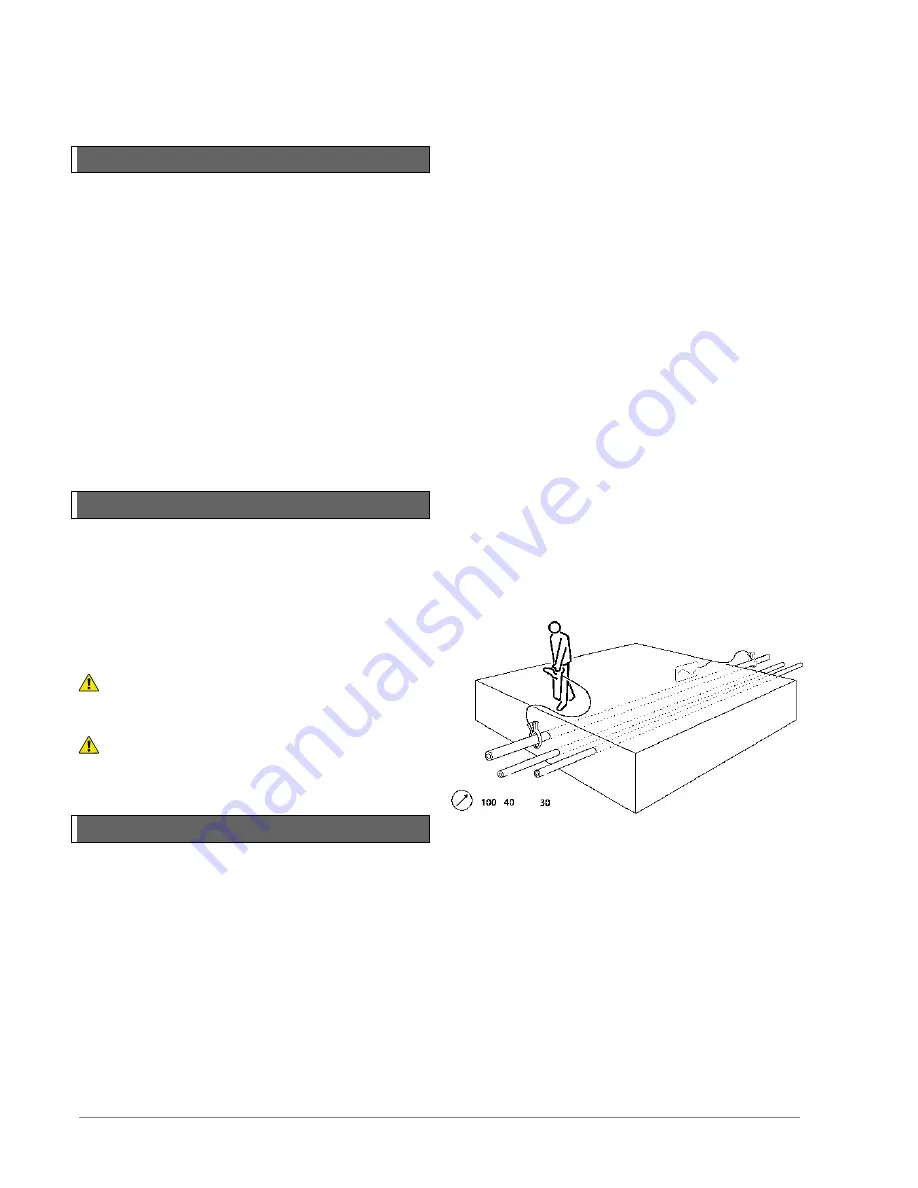
© 2015 Radiodetection Ltd
30
Section 8 - Using accessories
8.1 About accessories
Both the transmitter and locator are compatible with a
wide range of accessories.
When an accessory is connected, the locator or
transmitter will recognize it and will enable the mode
appropriate to the accessory. For example, attaching an
A-Frame to the RD8100 locator will automatically switch
the locator to fault-find mode and limit the number of
available frequencies to those that are compatible with
the A-Frame. The LCD will also display an icon of the
accessory and will remove any nonessential icons from
the screen.
Radiodetection supply an accessory sheet with pictures
and details of all applicable accessories which is
available on www.radiodetection.com
For a full list of supported accessories that are available
for purchase, refer to the appendix
8.2 Headphones
Radiodetection supplies an optional headphone set for
the RD8100 locator. The headphones feature an
adjustable headband to ensure a tight fit when used in
the field. The accessory headphones also feature
volume adjustment for both left and right speakers.
Connect the 3.5mm headphone jack into the locator’s
headphone socket, which is located next to the
accessory panel.
WARNING! Before wearing headphones, lower the
locator’s volume levels to help prevent damage to your
hearing.
WARNING! Wearing headphones may impede your
awareness to dangers in the field such as moving traffic
or other heavy machinery. Exercise caution!
8.3 Locator clamps
A locator clamp is used to positively locate and identify
a cable when several cables are running close together.
A target cable can be identified in a chamber, on a tray
or other access point by fitting a clamp to the locator and
examining each cable in turn. Signal strength response
shown on the locator display should be noted for each
cable.
When to use clamps
Clamps can be used where:
Several cables or pipes run in close proximity to
each other.
A cable or pipe is accessible at an inspection hole or
manhole.
NOTE: The standard clamp cannot be used with CD. A
special CM / CD clamp is available to clamp the lower
frequency CD signals.
Connecting a clamp
1 Put the clamp connector into the accessory socket
on the front of the RD8100 locator.
2 Place the clamp around the pipe or cable and switch
the locator on.
3 Set the frequency to the same as that on the
transmitter.
4 Put the clamp around each cable in turn and note
the bar graph response. Compare the strength of
response from each cable. The cable with a
substantially stronger response than the others will
be the cable to which the transmitter signal has been
applied.
To ensure that the target cable has been correctly
identified, reverse the positions of the transmitter and
locator and check that the strongest response is still
received from the target cable by the locator in its new
position.
Locator clamp range
Standard clamps
The clamp plugs into the locator accessory socket and
is used for cable identification at points where the cable
can be accessed. The standard clamps are suitable for
cables up to 130mm (
5¼”) diameter.
Figure 8.1: Connecting clamps

